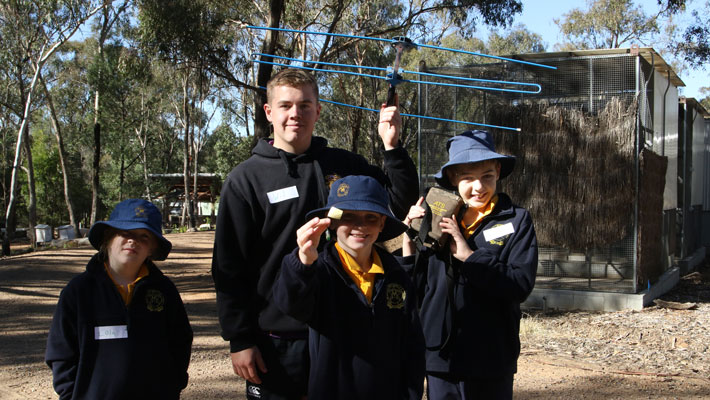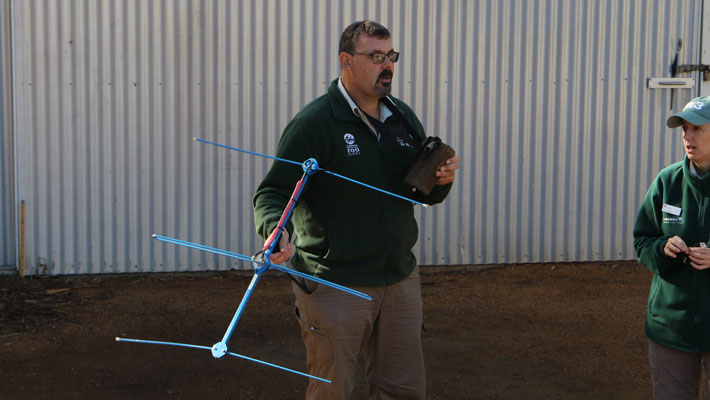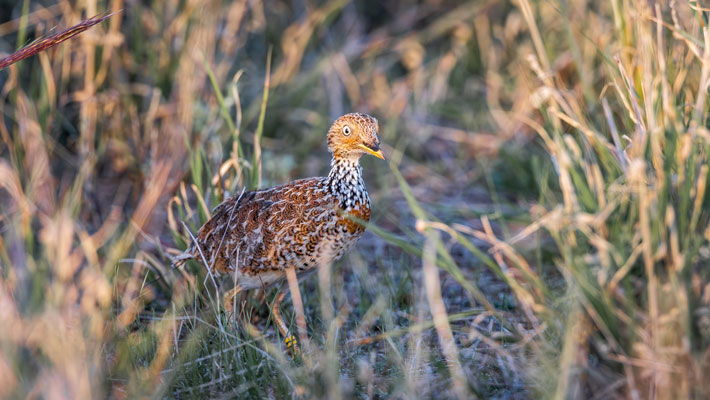Posted on 29th May 2023 by Media Relations
Students in the state’s south-west are learning about efforts to save the critically endangered Plains-wanderer from extinction.
Taronga Western Plains Zoo recently welcomed over 40 school students from Hay to take part in a Plains-wanderer in-situ project. The NSW Riverine Plain is the national stronghold for the Plains-wanderer with only around 2,500 birds in the wild.
The students – from Hay War Memorial High School, Hay Public School and St Mary’s Primary School – learnt about the birds’ plight through classwork as well as in the field, with a visit to one of the sites where zoo-bred Plains-wanderers have been released.
During their visit to the Zoo, students heard from conservation keepers, and even took turns using Very High Frequency (VHF) radio to locate a tracker – similar to those used for Plains-wanderer – hidden near the Education Centre.
The students then visited the Taronga Sanctuary, home to the Zoo’s Greater Bilby, Chuditch and Plains-wanderer conservation breeding programs. Here they had the chance to see what the birds eat, how they live, and how the keepers remotely monitor them using CCTV camera technology.



Plains-wanderer Project In-situ is a partnership between Riverina Local Land Services, NSW Department of Planning and Environment, Taronga Western Plains Zoo, the schools, and landholders in the Hay district.
Zoo education officer Kelly Pfeiffer said programs such as this are important to inspire the conservationists of the future.
“It’s crucial that these kids are involved in this project because this conservation work is happening in the Hay Plains where they live and grow,” she said.
“Kids need that real-world, hands-on learning, and if conservation is happening in their area they can be a really active part of it and come up with some brilliant solutions to help ensure the survival of the Plains-wanderer.”
About the Plains-wanderer
The Plains-wanderer is a small quail-like ground dwelling bird standing about 12 – 15cm tall and weighing about 40 – 95 grams.
The Plains-wanderer is classified as an EDGE species (Evolutionary Distinct and Globally Endangered) through the EDGE of Extinction program which highlights and protects the most unique species on the planet which are on the verge of extinction. The Plains-wanderer features as #1 Bird on the EDGE list.
The ongoing management of habitat across the species range is a critical part of the collaborative conservation breeding program. Across the species range, private landowners and managers are working with government and not-for-profit organisations to protect the species native grassland habitat. Collectively, the work being done by all project partners aims to remove this species from the critically endangered list.